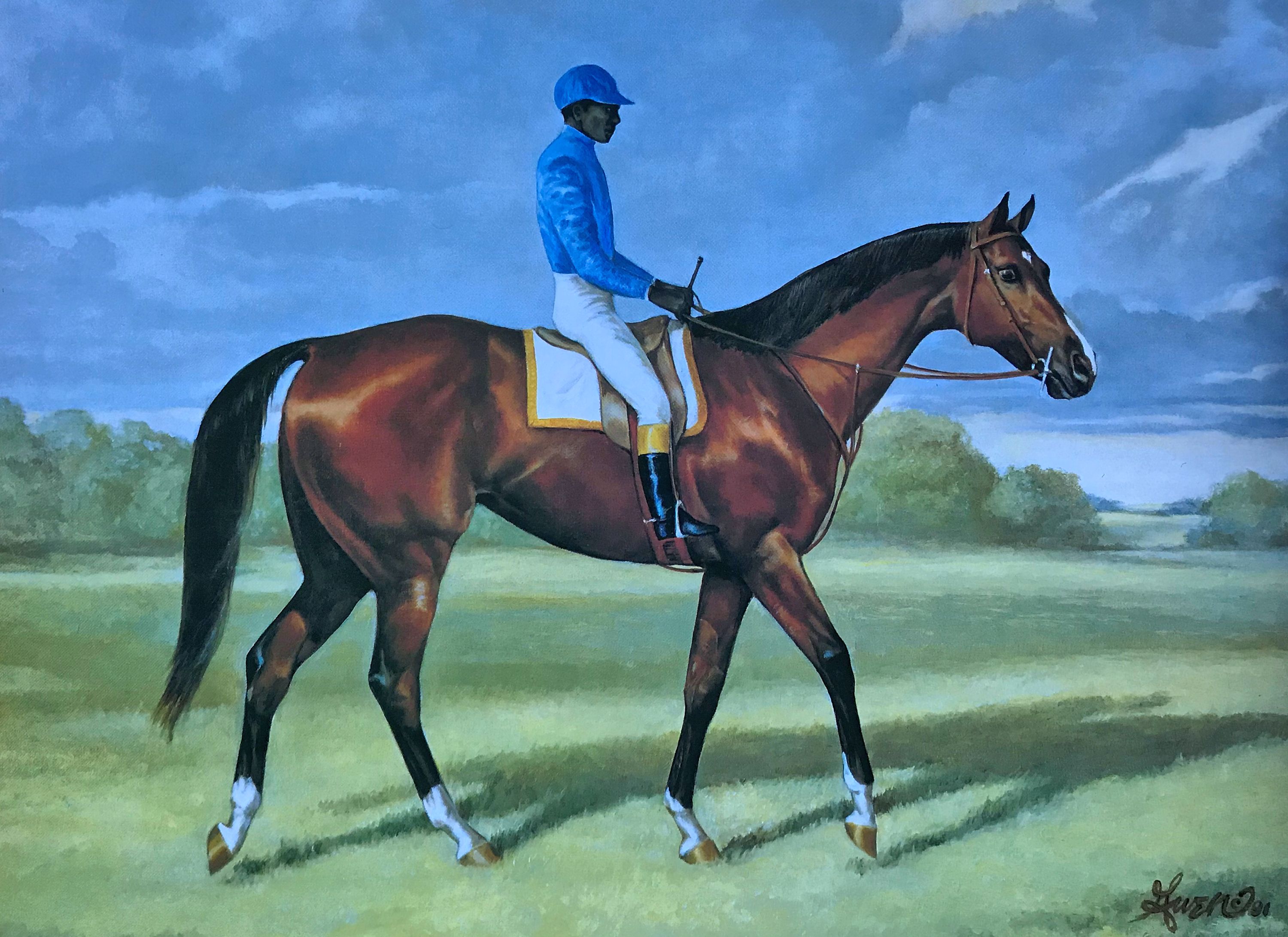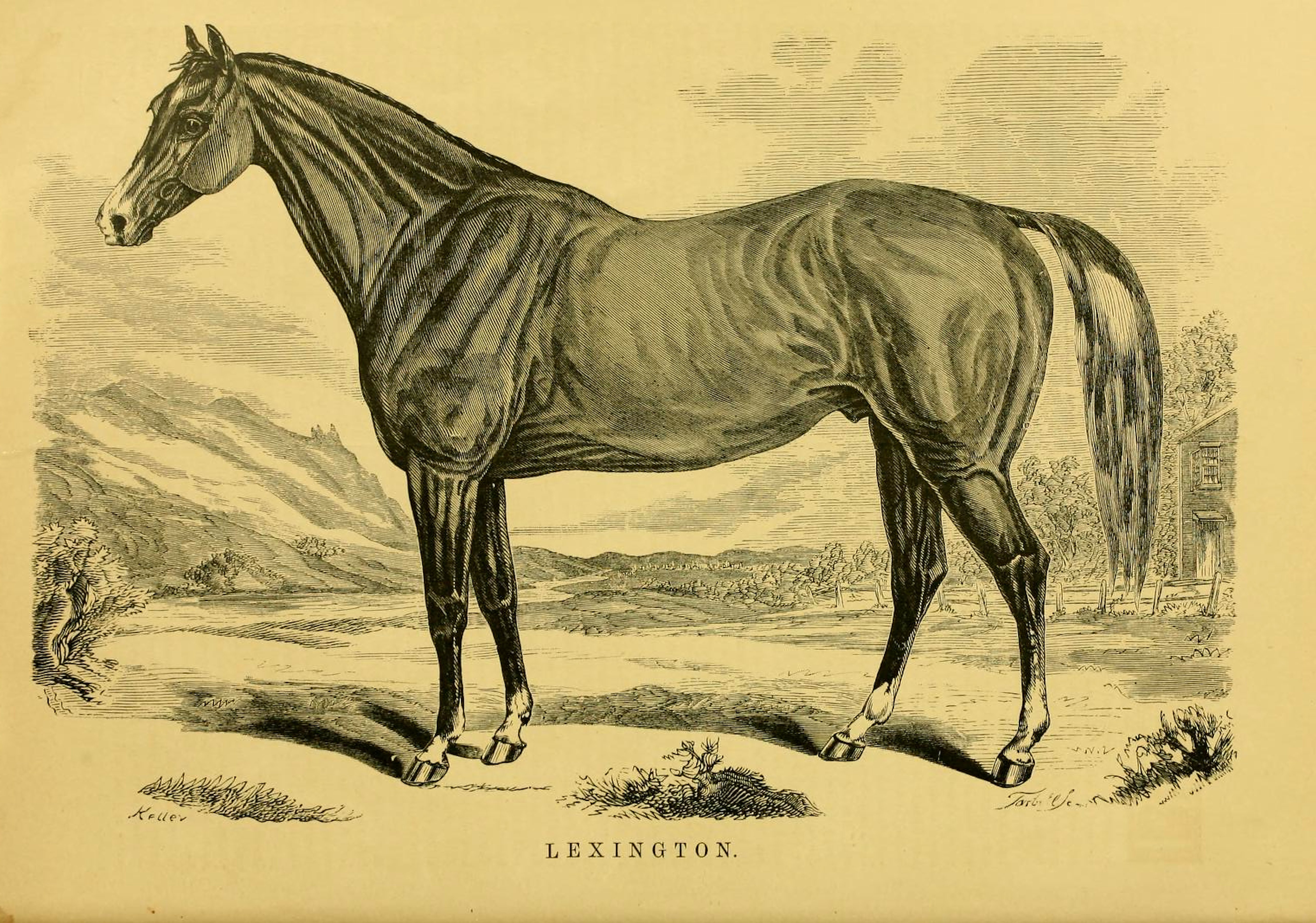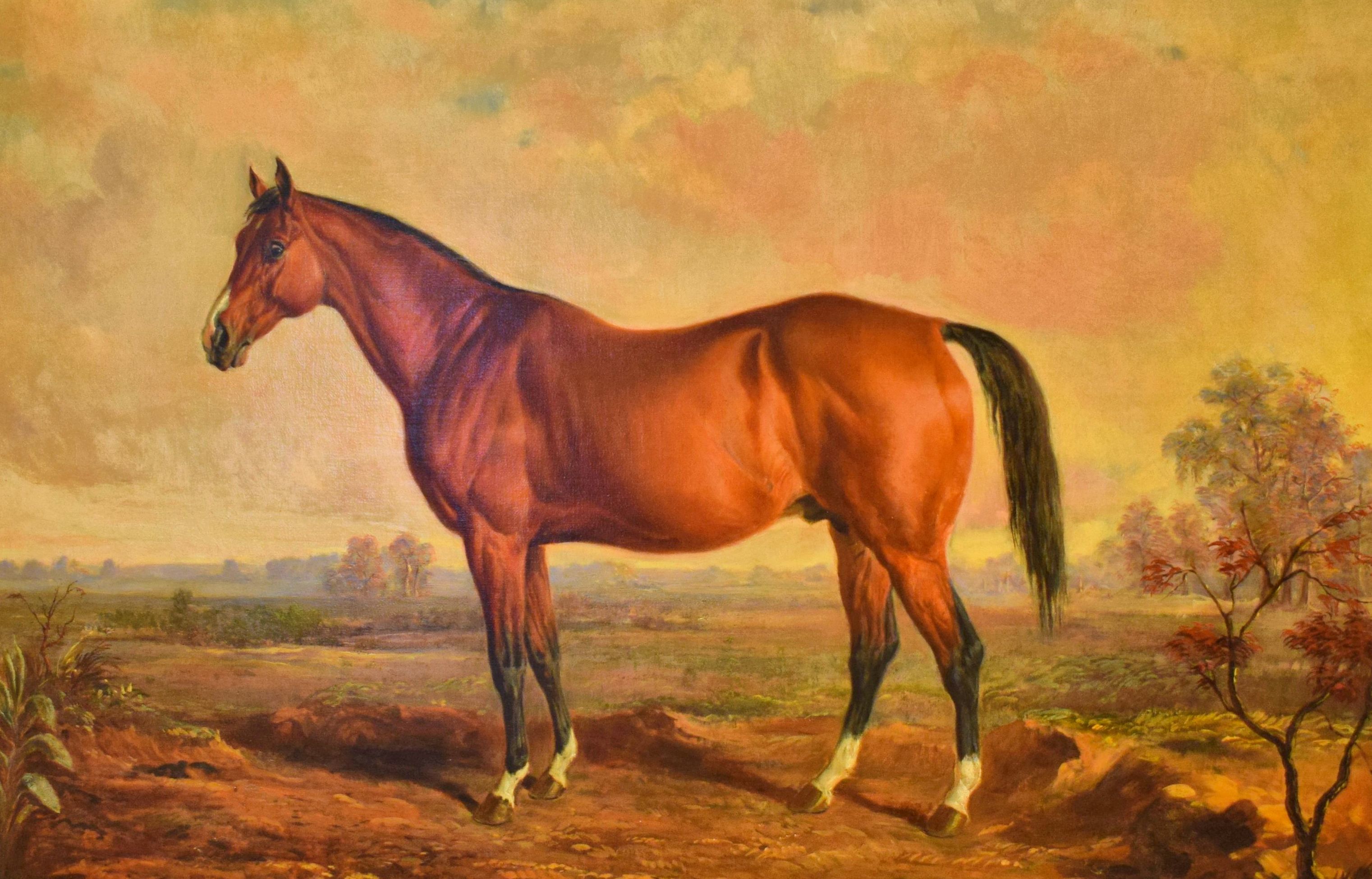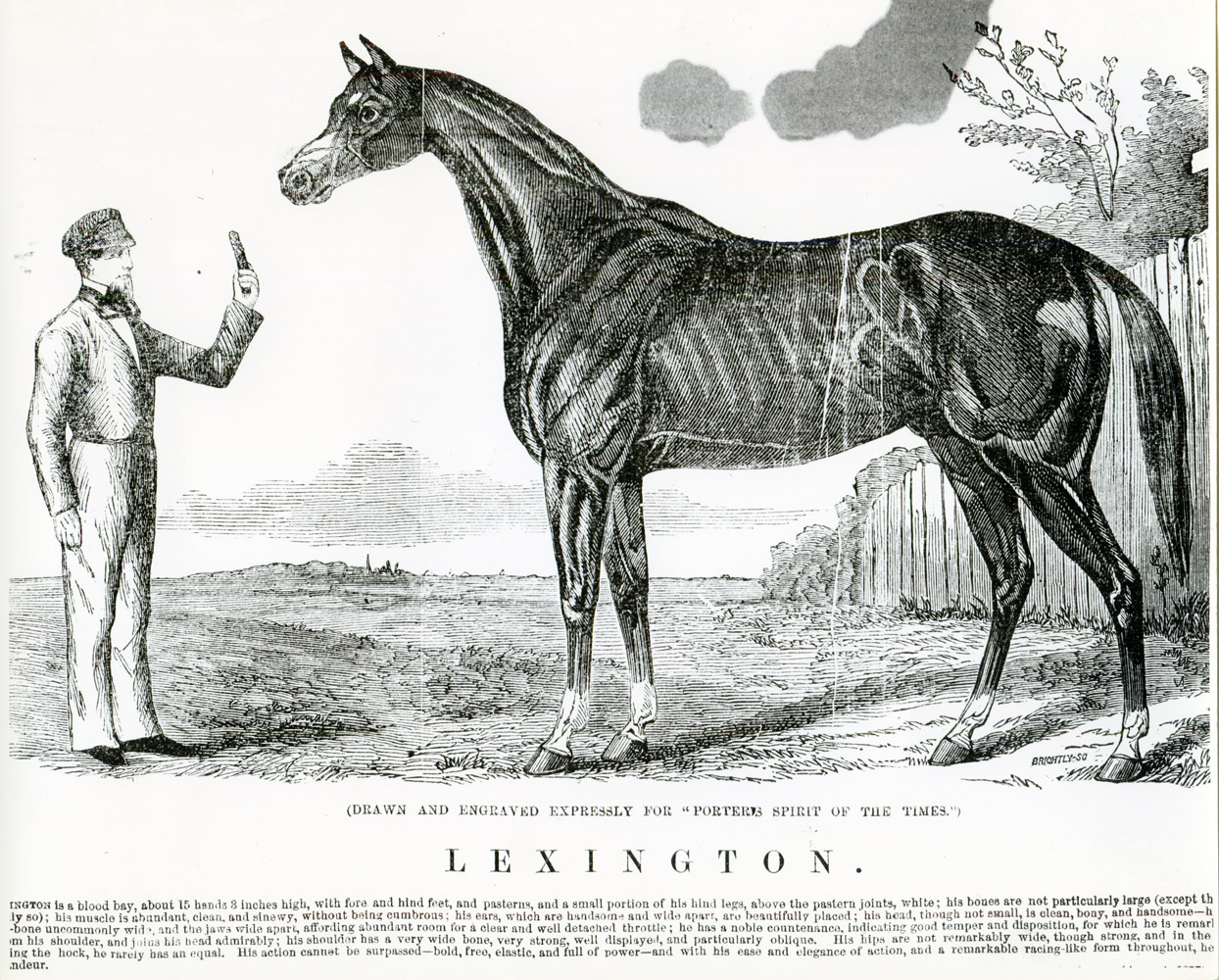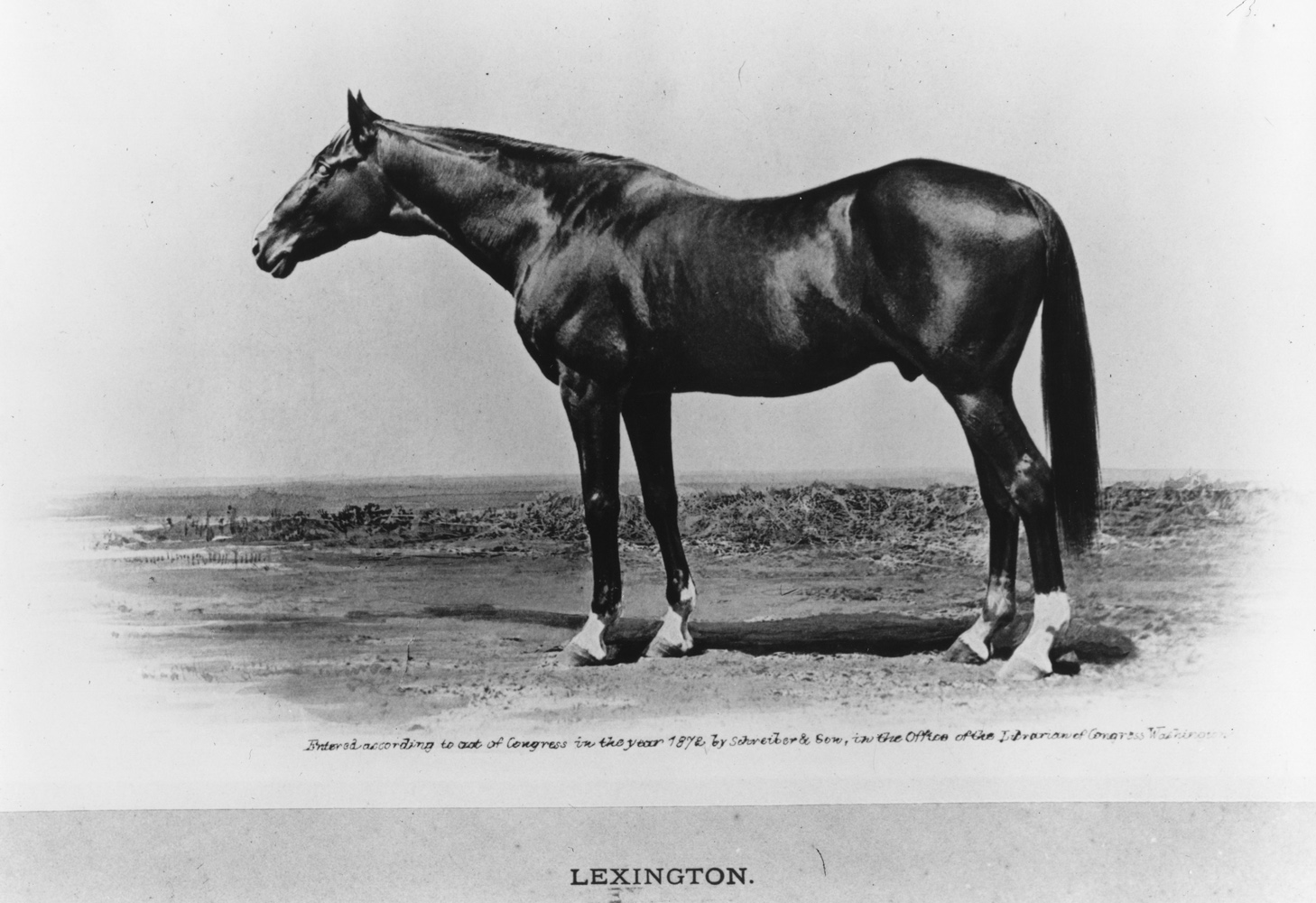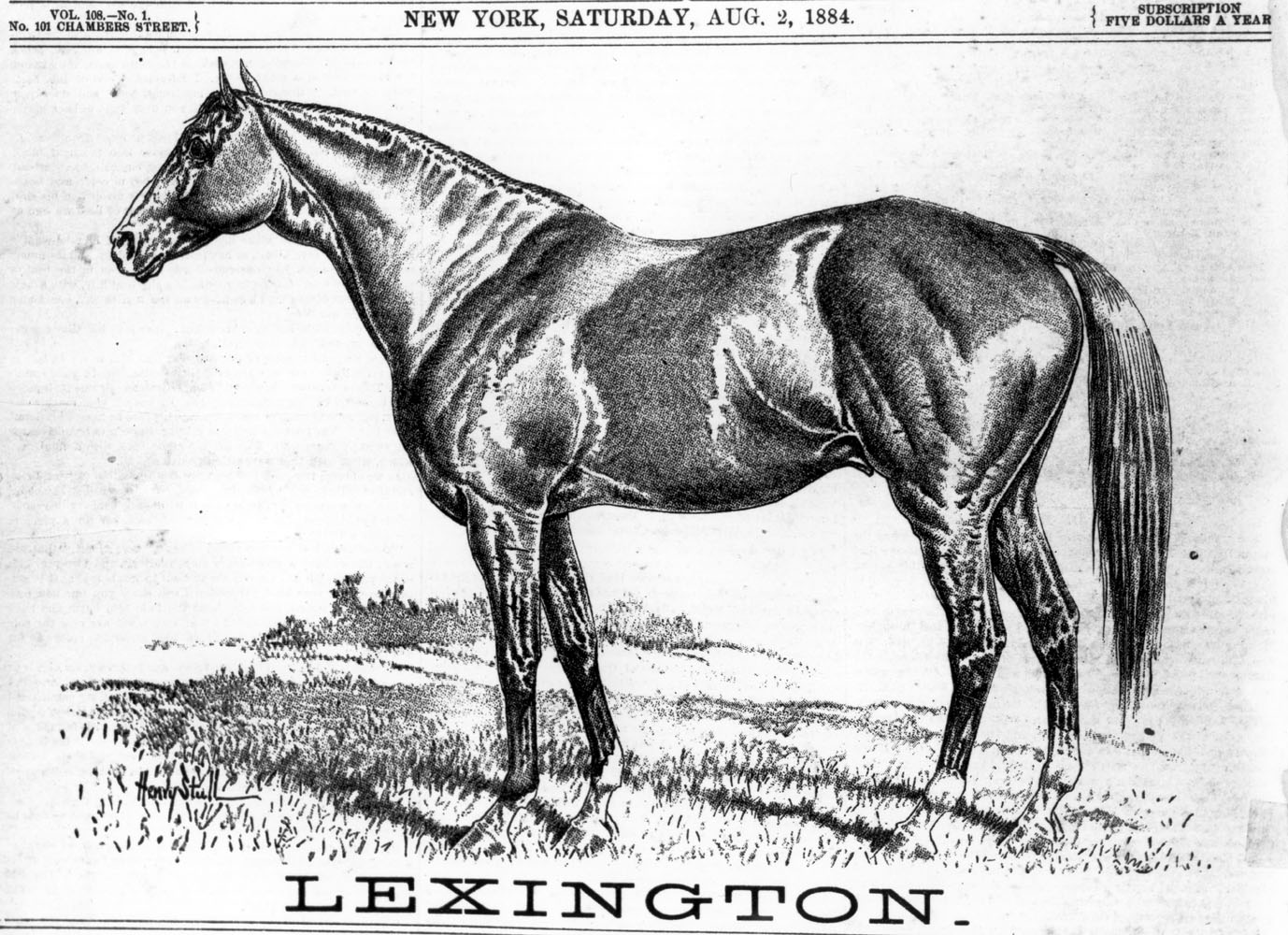Lexington (KY)
Lexington was the finest racehorse of his day and his prowess as a stallion is unmatched in American history as the sport’s leading sire a record 16 years.
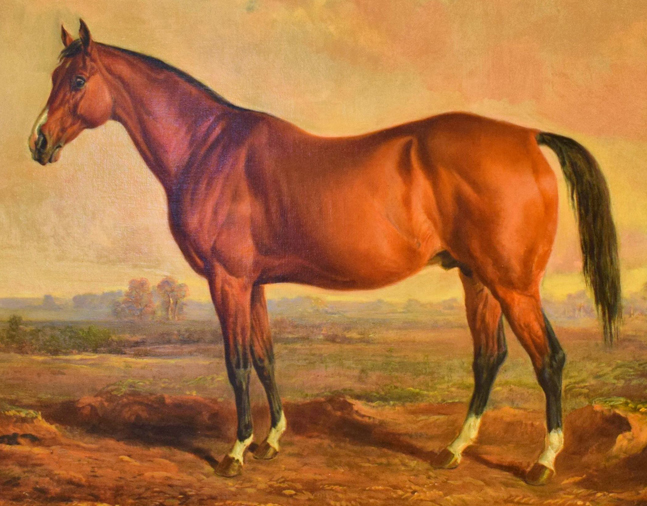
1955
1850
Boston
Alice Carneal
Sarpedon
Dr. Elisha Warfield
Dr. Elisha Warfield
Richard Ten Broeck
Gen. Abe Buford
Capt. Willa Viley
Junius R. Ward
Henry Brown
J. B. Pryor
1853-1855
$56,600
Racing Record
7
Starts
| 1853 | 3 | 3 | 0 | 0 | $0 $0 |
| 1854 | 4 | 3 | 1 | 0 | $0 $0 |
Biography
Lexington was the finest racehorse of his day and his prowess as a stallion is unmatched in American history as the sport’s leading sire a record 16 years.
A bay colt bred by Dr. Elisha Warfield, Lexington was a son of Hall of Famer Boston out of the Sarpedon mare Alice Carneal. Under the name Darley, he easily won his first two races in 1853 for trainer Henry Brown, catching the eye of Richard Ten Broeck, who purchased the colt along with partners Gen. Abe Buford, Capt. Willa Viley, and Junius R. Ward for $2,500.
The new owners sent the horse to train under J. B. Pryor. Ten Broeck renamed him Lexington prior to the 1854 Great State Post Stakes, which was traditionally a competition between the best horses from each state. Lexington easily won the race against four others in two four-mile heats. One of the foes he defeated that day was Lecomte, a horse Lexington developed a fierce rivalry with. Lexington lost to Lecomte in a four-mile heat race in his next outing, but defeated him in their next two meetings.
On April 2, 1855, Lexington was sent to Metairie Race Course in New Orleans, where he set a record at four miles with a time of 7:19¾. Lexington, however, had to be retired that year because of poor eyesight, which also plagued his sire.
Lexington began his stud career at Nantura Stock farm in Midway. Kentucky, before being sold in 1856 to Robert A. Alexander for $15,000 to stand at Woodburn Stud. Called “The Blind Hero of Woodburn,” Lexington was the leading sire in North America from 1861 through 1874, and again posthumously in 1876 and 1878. Nine of the first 15 winners of the Travers Stakes were sons or daughters of Lexington, including inaugural Travers winner Kentucky, as well as Duke of Magenta and Harry Bassett.
Overall, Lexington sired the winners of 1,176 races, including three winners of both the Preakness Stakes and Belmont Stakes. His stallion record becomes even more impressive when it is taken into consideration that some of his prime years at stud occurred during the Civil War when racing was mostly shut down in America. Many of his progeny went into the cavalry and numerous mares carrying his foals were either stolen or lost. Alexander went to great lengths to hide Lexington during the Civil War to avoid having his mighty stallion stolen or killed by marauding soldiers.
When he received word that Confederate soldiers were on their way to Woodburn in the spring of 1863, Alexander and his Woodburn stablehands rode the farm's horses, including Lexington, through the Kentucky countryside during the night to a barge waiting on the Ohio River to have them transported safely to Illinois, where they remained hidden until the war was over.
Lexington was 25 years old when he died July 1, 1875. He was buried at Woodburn near the stables.
Media
